The Talent Puzzle is a three-part series focusing on employee talent recruitment and retention, by emphasizing Corporate Citizenship. It was originally published in the Springfield Business Journal.
In concert with the new podcast Citizen Inc., co-hosted by Greg Burris and Eric Olson of the Springfield Business Journal, we are sharing the series which:
- Explores a new generation of employees.
- Includes research that backs the need for change.
- Stories from area employers.
Citizen Inc. debuts today and explores how corporate citizenship is key to talent attraction and retention.
THE TALENT PUZZLE – PART TWO
By: Greg Burris, president and CEO of United Way of the Ozarks

In my first column, I shared how my daughter’s job search criteria was different than mine as a Baby Boomer. In this column, I invite you to consider some of the research data that shows my daughter’s focus is not an anomaly.
Instead, she and her generation are part of a movement – a movement the rest of us should study and prepare for as the competition for talent becomes even more fierce over the next 20 years or longer.
First, some context
According to the Pew Research Center, millions of Baby Boomers are retiring from the workforce each year. For a 19-year span, we are averaging around 10,000 Baby Boomers turning 65 every day. Some retire at age 65; others do not. But the pandemic seems to have accelerated Baby Boomer retirements.
Simultaneously, millennials have become the largest component of today’s workforce, and their numbers will continue to increase.
I would argue that we, as employers, all have a tool in our toolbox that we may not be using as much as we should. The organizations that get this right will have a significant competitive advantage.
What if there was a relatively low-cost tool you could use that would:
- Boost your organization’s brand and reputation within our community?
- Help you attract new talent?
- Help you retain your existing talent?
- Turn your existing employees into your best talent recruiters?
- Create a more engaging and healthier workplace culture?
- Provide your employees with new skills?
- Increase your employees’ loyalty, productivity, pride and health?
Would you consider it?
The inversion of the labor curve
When workforce supply exceeded the market demand (jobs available), employers had the upper hand in the talent attraction and retention equation. But now demand exceeds supply. Thus, employees have a much stronger hand to play today.
Of course, a job must provide a livable wage and competitive benefits – these are the minimum requirements in a seller’s market. But dinosaurs like me may need to step back and rethink a few things. Wages and benefits may no longer be the differentiators they were in the past when competing for talent. We may need to think more broadly.
Studies show community engagement as the differentiator
A wealth of research studies show that community engagement (or “corporate citizenship”) can produce all the above-listed outcomes. Here is a small sample of the research that supports just the employee retention and attraction claims.
First, let’s talk about retaining the talent you’ve got.
Studies indicate that replacing an employee costs 50-100 percent of his or her annual salary. Thus, even a relatively moderate reduction in employee turnover can produce a significant savings.
According to a PricewaterhouseCoopers study, employees who are most committed to their organizations are 87% less likely to quit.
But how do employees become committed to their employers? How do we create a more engaging and healthy organizational culture that produces more committed employees and boosts loyalty?
According to a 2019 study by Boston College’s Center for Corporate Citizenship, “95% find a positive correlation between employee volunteering and higher employee engagement scores.” So, it seems that employees who are more engaged in their community are more engaged in their work.
Various research studies over the years (e.g., V. C. Burbano, UCLA Anderson School of Management; Chun Et Al, Journal of Management) indicate that strong community engagement increases employee commitment, affinity, productivity and their admiration for their employer. A Harvard Business Review research study indicated 86% of Millennials and 85% of Boomers believe it is important that their work involve “giving back.” And aren’t these committed, engaged employees who you want recruiting your next employee?
An effective tool for talent attraction
It appears that “corporate citizenship” boosts an employer’s ability to retain their existing talent.
But what about attracting new talent to your organization? Can “corporate citizenship” help there, too?
That same Boston College study indicated “more than 80% of company respondents report that community involvement contributes to improving [the organization’s] ability to both recruit employees and reduce turnover.”
According to a couple of research studies, “community responsibility” is a proxy for strong, well-managed companies with bright futures. When people/customers see an organization engaging with their community to help solve social problems, it boosts the organization’s reputation in their minds. This can only help when trying to recruit talent.
According to a study by J. Meister published by Forbes, 80% of Millennials want to work for a company that cares how it impacts and contributes to society. Over half would refuse to work for an irresponsible corporation.
Corporate citizenship is good for the bottom line. It’s also good for employees, good for the organization’s public reputation and brand, and good for the community. This is a version of the Triple Bottom Line.
Some organizations already get this; others are yet to jump into the pool of community engagement. In my next column, I will relay why some organizations set “corporate citizenship” as a priority within their organization and the benefits it yields.

